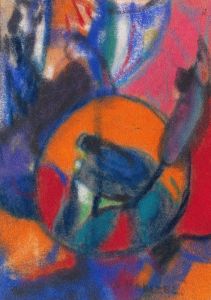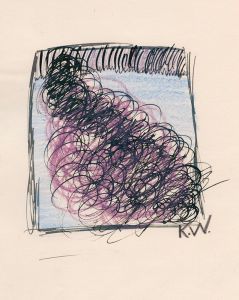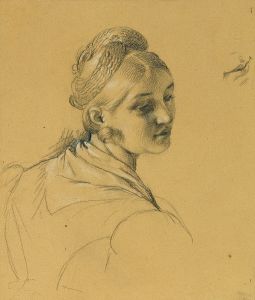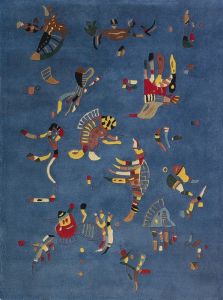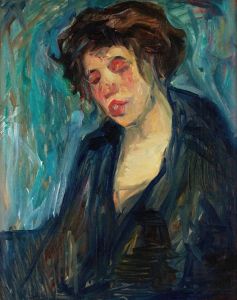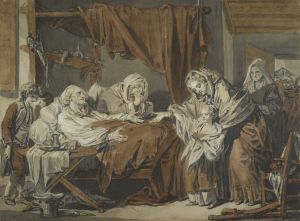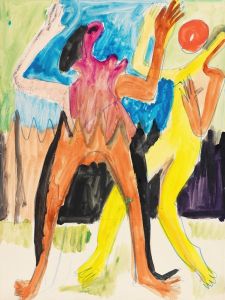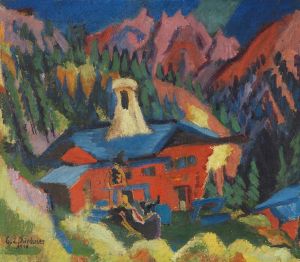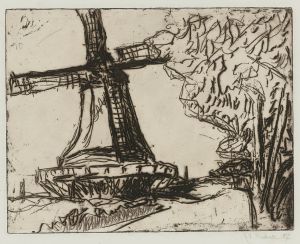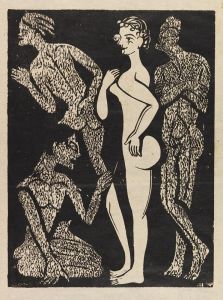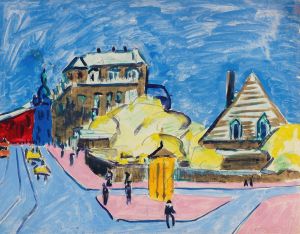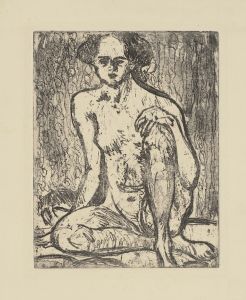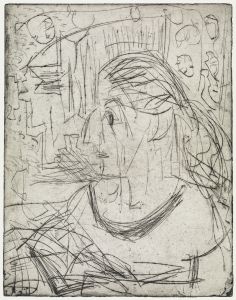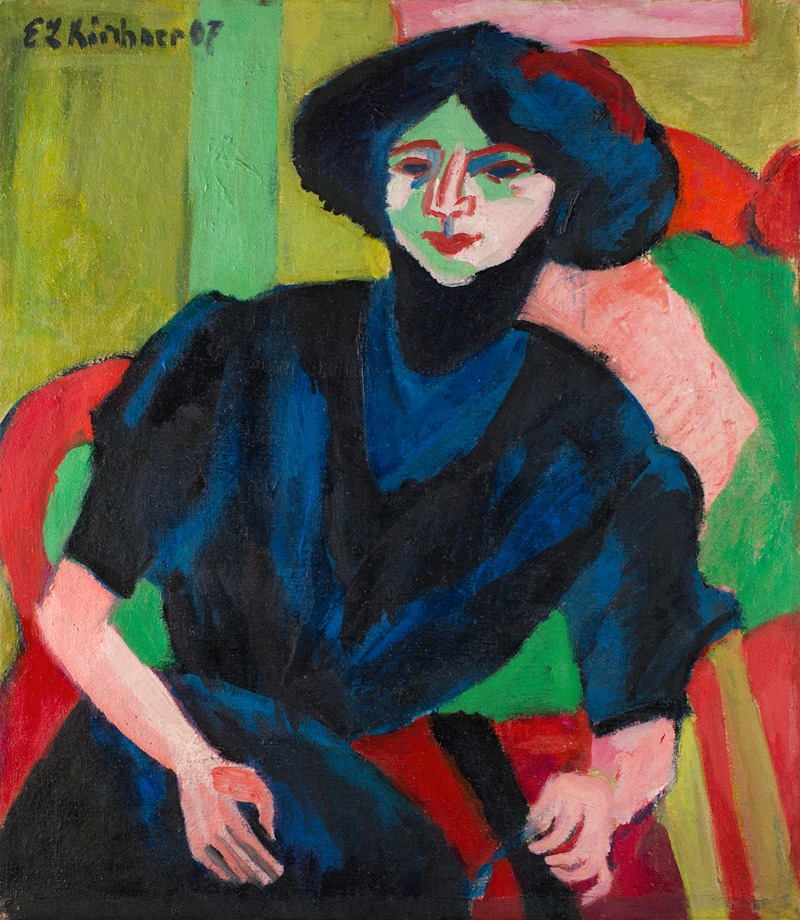
Portrait of Gerti
A hand-painted replica of Ernst Ludwig Kirchner’s masterpiece Portrait of Gerti, meticulously crafted by professional artists to capture the true essence of the original. Each piece is created with museum-quality canvas and rare mineral pigments, carefully painted by experienced artists with delicate brushstrokes and rich, layered colors to perfectly recreate the texture of the original artwork. Unlike machine-printed reproductions, this hand-painted version brings the painting to life, infused with the artist’s emotions and skill in every stroke. Whether for personal collection or home decoration, it instantly elevates the artistic atmosphere of any space.
Ernst Ludwig Kirchner's Portrait of Gerti is a painting created by the German Expressionist artist, who was a founding member of the influential art movement Die Brücke (The Bridge). Kirchner, known for his bold use of color and dynamic compositions, often depicted people in his works, reflecting his interest in the human form and emotional expression.
The subject of this portrait, Gerti, is believed to be Gertrud Schilling, the younger sister of Erna Schilling, who was Kirchner's partner and frequent model. Gerti appeared in several of Kirchner's works, often portrayed with the vibrant, angular style characteristic of his art. The painting exemplifies Kirchner's ability to convey psychological depth and individuality through his distinctive Expressionist techniques.
Kirchner's work during this period was heavily influenced by his involvement with Die Brücke, which sought to break away from traditional academic art and embrace a more raw, emotive style. The group was inspired by non-Western art, as well as the works of Post-Impressionist and Fauvist artists. These influences are evident in Portrait of Gerti, particularly in the bold, simplified forms and the striking use of color.
The exact date of the painting is not definitively documented, but it is likely to have been created during Kirchner's most productive years in the early 20th century, before World War I. This was a time when he was experimenting with new artistic approaches and exploring themes of modernity, individuality, and the human condition.
As with many of Kirchner's works, Portrait of Gerti reflects the tension and dynamism of the early 20th century, a period marked by rapid social and cultural changes. The painting is also a testament to Kirchner's skill in capturing the essence of his subjects, imbuing them with a sense of vitality and presence.
The current location of Portrait of Gerti is not widely documented in public records, and further details about its provenance or exhibition history are limited. However, Kirchner's works are held in numerous major art institutions and private collections worldwide, reflecting his enduring influence on modern art.
This painting is a significant example of Kirchner's contribution to the Expressionist movement and his ability to portray the complexities of human emotion through innovative artistic methods.





